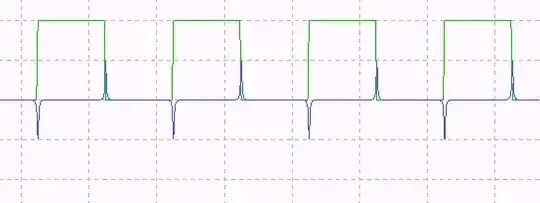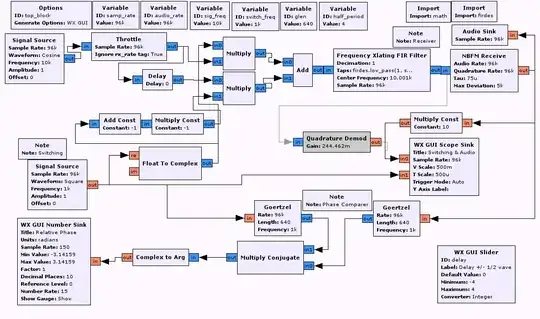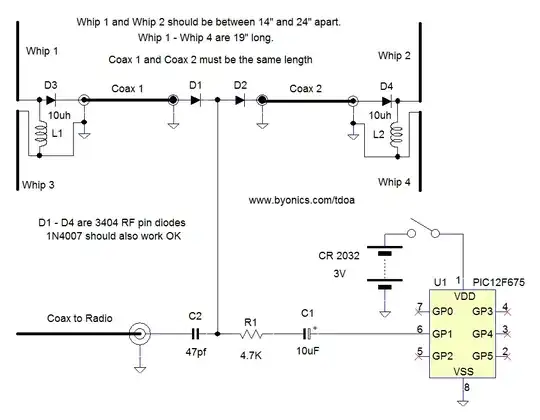When the tone is present, it is because the antennas are out of phase. One antenna's signal will be leading the other; which one is leading depends on which one is closer to the transmitter (provided that the antennas are less than 1/2 wavelength apart, so that the phase difference will always be less than 180°).
When we switch from the lagging signal to the leading signal (for example), the phase of the switched signal jumps ahead; equivalently, the frequency of the signal increases for an instant and then returns to normal. The same but inverted applies to switching from the leading signal to a lagging signal. The output of a FM receiver is determined by the frequency of the input, so we get a result like this:

The green waveform is the switch control and the blue waveform is the demodulated signal (the frequency deviation). After audio-frequency filtering on the output, we get a more ordinary tone, though with a delay introduced by the filter:

If the time delays of the arriving signal are the other way around, then the phase shifts are opposite, and the audio signal is negated — or, equivalently, phase shifted by 180°.
Therefore, to distinguish between left and right (that is, left signal leading vs. right signal leading) one need merely compare the phase of the audio signal to the phase of the switching signal; there are only two possible results (except when the audio tone is absent and the phase is therefore undefined).
Note that the exact phase difference found will depend on all delays in the system, including in the external receiver; but that would be simple to calibrate for.
I have built a simulation of this system using GNU Radio, and used it to produce the plots shown and confirm that the technique can produce a reliable left/right indication (at least for an unmodulated input). Here are the GNU Radio Companion file and generated Python program (GNU Radio 3.7+ required).

Note that while the RF sections of this simulation use complex (analytic) signals, there is nothing in those sections which would make a difference from the results obtained by using real signals at a nonzero IF as usual analog RF electronics do.
On the other hand, in the perpendicular direction, it is not possible to distinguish the front and back sides; there is a fundamental ambiguity due to the symmetry of the antenna array. No direction finding system can distinguish between directions in which its antennas are symmetrical; the asymmetry which allows the discrimination described here comes from the switching of the antennas rather than their shape.



